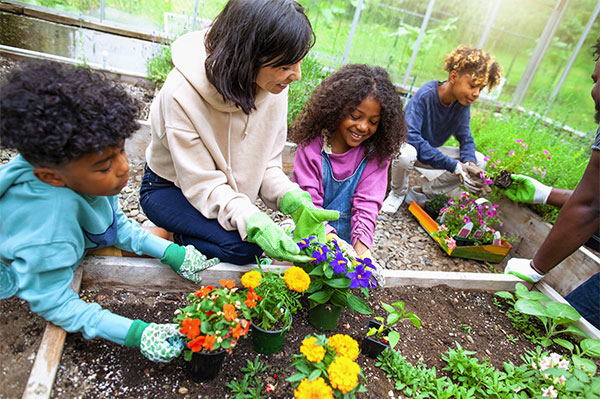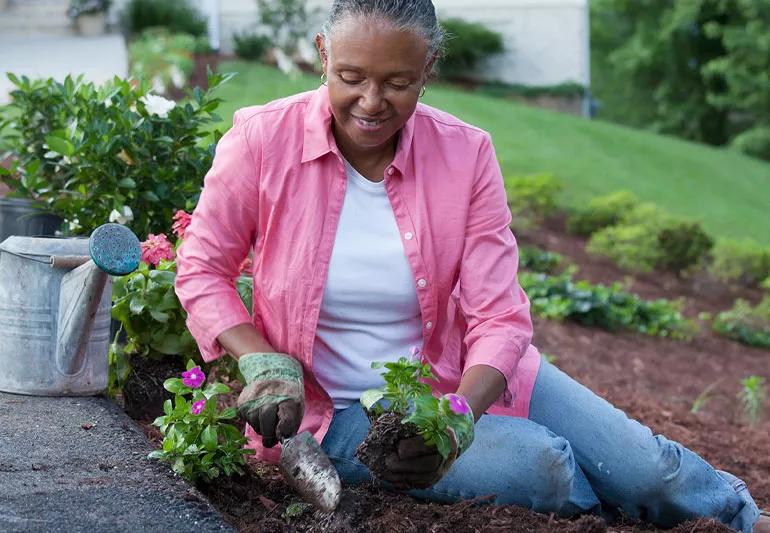Seasonal Gardening Tips to Keep Your Garden Flourishing Year-Round
Seasonal Gardening Tips to Keep Your Garden Flourishing Year-Round
Blog Article
Simple Gardening Tips to Change Your Yard Into a Lush Paradise
Transforming your backyard into a lush paradise involves a strategic approach, beginning with assessing your space to understand sunlight patterns and soil top quality. Picking plants that grow in your neighborhood environment is critical, as is maximizing dirt with natural matter and efficient watering techniques.
Assess Your Space
Assessing your room is a crucial first action in developing an effective yard garden. This initial evaluation will certainly lead all succeeding choices, making sure that your garden is both lovely and practical. Begin by determining the dimensions of your lawn to understand the available location. Keep in mind any existing frameworks, such as sheds, outdoor patios, or walkways, as these can affect your style.
Recognize zones that obtain complete sun, partial color, and full color, as various plants have differing light demands. Conducting a dirt test can offer useful details on pH levels and nutrient content, enabling you to make needed modifications for optimal plant growth.
Drain is one more critical element - gardening tips. Poor drain can cause water logged dirt, detrimental to many plants. Look for locations where water often tends to swimming pool after rainfall and take into consideration implementing solutions like raised beds or French drains
Lastly, assess the microclimates within your yard. Elements such as wind exposure, distance to buildings, and elevation changes can create unique growing conditions. Understanding these nuances will help you make informed selections, establishing the phase for a thriving yard yard.
Choose the Right Plants
Picking the ideal plants for your yard yard is basic to attaining a vibrant and well balanced landscape. To start, think about the regional climate and strength area, as these aspects establish which plants will certainly flourish in your environment. Hardy perennials such as lavender and coneflowers are ideal for cooler environments, while exotic plants like hibiscus and bougainvillea suit warmer areas.
Next, assess the quantity of sunlight your garden receives. Plants have varying light requirements; some flourish in complete sun, while others favor partial color or full color. Sun-loving plants like sunflowers and tomatoes need a minimum of 6 hours of direct sunlight daily, whereas hostas and brushes flourish in shaded areas.
In addition, think about the soil key in your garden. Some plants like well-drained sandy soils, while others grow in clay or loamy problems. Indigenous plants are commonly a smart choice, as they are normally adapted to the regional soil and environment, calling for less upkeep.

Enhance Soil Quality
Enhancing soil high quality is the next important action to guarantee your picked plants grow. The structure of any kind of growing yard is nutrient-rich dirt. Performing a dirt test is vital; it supplies insights into pH levels and nutrient shortages, permitting you to customize modifications specifically to your yard's requirements. Examining packages are widely available and easy to utilize, or you can get professional services for more in-depth evaluation.
Incorporating raw material, such as compost or well-rotted manure, can dramatically improve soil framework and fertility. Raw material enhances aeration, water retention, and microbial task, which are all important for healthy and balanced plant development. Aim to add a 2-3 inch layer of organic issue to your dirt each year, blending it well to integrate with the existing dirt.
In addition, think about the appearance of your soil-- whether it is sandy, clay, or fertile. Each type has distinctive qualities that influence water drain and nutrient availability. Modifying sandy soils with natural matter can boost its water-holding capacity, while integrating gypsum into clay dirts can enhance water drainage and decrease compaction.
Implement Watering Approaches
How essential is a well-planned watering method to the success of your yard yard? In essence, it is the lifeline that sustains plant health and wellness and cultivates growth. Appropriate watering ensures that plants get the appropriate amount of wetness, protecting against both under- and over-watering, which can result in wilting or origin rot.
First, consider the particular requirements of your plants. Various varieties have differing water needs.
Second of all, timing is vital. Watering in the morning or late afternoon reduces evaporation and permits plants to soak up dampness successfully. This practice conserves water and supports healthier root systems.
Furthermore, utilizing effective sprinkling techniques such as drip irrigation or soaker hoses can view publisher site optimize water use. These approaches deliver water directly to the origins, lowering wastage and promoting deeper origin development.
Lastly, consider mulching. Using a layer of compost around plants assists keep soil dampness and minimizes the need for frequent watering. By executing these techniques, you can ensure your yard garden continues to be lively and durable, even throughout durations of dry spell.
Incorporate Yard Attributes
Including yard features can significantly improve both the aesthetic allure and functionality of your yard garden. Attentively picked features such as paths, water elements, and yard structures can develop a harmonious and inviting atmosphere. Pathways, built from products like rock, wood, or crushed rock, not just guide site visitors with the useful site yard but also stop dirt compaction and safeguard plant origins.
Water features, such as water fountains, fish ponds, or small waterfalls, present a comforting auditory aspect while sustaining local wild animals like birds and beneficial bugs. The audio of trickling water can also minimize the assumption of environmental pollution, developing a serene atmosphere.
Yard frameworks, consisting of trellises, pergolas, and arbors, provide both vertical rate of interest and functional assistance for climbing up plants. These components can also offer shaded areas for relaxation and celebrations. Furthermore, including seating locations and attractive components like statues or garden art can personalize the space, making it a true reflection of your style.
Final Thought
In final thought, transforming a backyard into a rich paradise involves an extensive evaluation of the offered area, cautious choice of plants fit to regional climate conditions, and optimization of dirt top quality via natural enrichment. Carrying out effective watering techniques guarantees sustained plant health, while including architectural aspects such as pathways and seating areas boosts aesthetic charm and performance. These steps jointly add to the development of a dynamic, inviting yard area that delights the senses.

In conclusion, changing a yard right into a lush paradise includes a comprehensive evaluation of the readily available room, cautious option of plants matched to local climate conditions, and optimization of soil high quality via natural enrichment.
Report this page